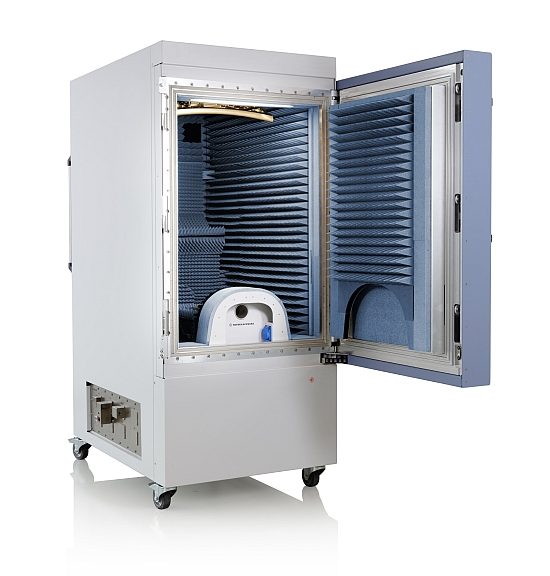- Rohde & Schwarz is continuing its research in the sub-THz band, focusing in particular on the D-band frequencies from 110 GHz to 170 GHz. These frequencies could be exploited by the 5G and 6G generations of mobile communications as well as for future automotive radar applications.
- Rohde & Schwarz carried out with the IHP the characterization of the radiation patterns of transmit-receive modules operating in the D-band.
- The Innovations for High Performance Microelectronics (IHP) is a German non-university research entity specializing in the study and development of microelectronic circuits operating in the high-frequency range.
Antenna systems and RF transceiver modules required for future automotive radar applications and 5G communications equipment operating at millimeter wave frequencies will have similar characteristics. Their wide frequency range, larger number of antenna elements, and lack of conventional external RF connectors will require OTA (over-the-air) testing in a shielded chamber. Rohde & Schwarz and IHP have demonstrated the possibility of performing 2D/3D OTA measurements of a radar module at D-band frequencies.
The test device combines several solutions from Rohde & Schwarz: the antenna test system R&S ATS1000, the vector network analyzer R&S ZNA43 and the antenna measurement software R&S AMS32. The R&S ATS1000 system is a shielded, compact and mobile chamber for OTA measurements and antenna tests. Extensions from Radiometer Physics, a Rohde & Schwarz company, are being implemented to cover D-band frequencies. This allows the frequency to be converted directly at the probe into transmit and receive. The antenna test system does not require any mechanical modifications or the addition of RF cabling. The test setup can measure the coherent amplitude and phase response of a D-band radiating DUT. Automatic 3D antenna pattern measurements and post-processing can be performed thanks to the accuracy of the positioner and the options of the R&S AMS32 software for near-field to far-field transformation.
The IHP provided four separate components for testing (DUT), based on the same set of D-band radar transmit/receive chips but with different antenna structures.
The performance of the different DUTs was characterized by spherical measurements in two different configurations. By increasing the size of the angular theta step from 1 to 5 degrees, the total test duration for one DUT could be reduced from 70 minutes to 12 minutes. By comparing the different DUT designs based on the measurements obtained, IHP researchers were able to analyze the effect of the finite on-board reflector area on the radar sensor FoV (field-of-view).
“The Rohde & Schwarz OTA test system, extended to D-band, is an excellent means of characterizing the radiation patterns of the complex antenna structures onboard our D-band radar chips. For the IHP, these measurements are valuable for understanding the physics of antenna structures and for improving their performance,” said Professor Gerhard Kahmen, Managing Director of the IHP.






